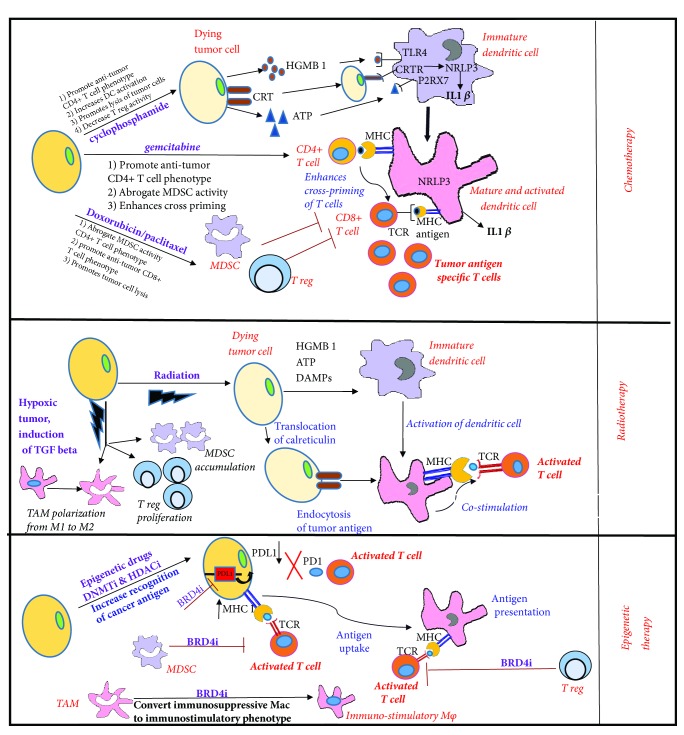Figure 2.
Mechanisms of inducing immunogenic tumor cell death and decreasing tumor burden by chemotherapy, radiotherapy, and epigenetic therapy. Upper panel shows how chemotherapeutic drugs induce immunogenic death through release of tumor antigens, secretion of danger associated signals HGMB1 and ATP, and translocation of calreticulin to cell surface. These death-associated molecules bind to TL4R, P2RX7 receptors, and calreticulin receptors which leads to activation of NRLP3 inflammasome and activation of dendritic cells to induce tumor antigen specific T-cell responses. Some chemotherapeutic drugs decrease infiltration and accumulation of Tregs and MDSCs in the TME leading to activation of adaptive immune responses. Middle panel shows the immunogenic cell death induced by radiotherapy. Figure also shows that radiation induces increased transcription of HIF 1α and activation of latent TGF beta which leads to increased Treg proliferation and polarization of M1 macrophages to M2 macrophages leading to activation of immunosuppressive TME. Lower panel shows how epigenetic therapy promotes antitumor responses by upregulating tumor-associated antigens and downregulating PDL1 expression. BRD4 inhibitors block accumulation of MDSCs in TME and reduce immunosuppression by promoting the polarization of macrophages into immunostimulatory phenotypes.

